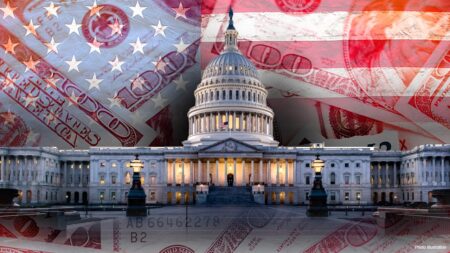It doesn’t take long for a U.S. visitor in Colombia to appreciate the dangers of runaway inflation.
They come to this realization even though, relative to historical examples of hyperinflation, Colombian inflation doesn’t particularly stand out. The country’s consumer price index has increased at an annualized rate of just over 10% for the past several decades.
Nevertheless, the long-term impact of Colombia’s inflation has been overwhelming. In 1960 it took about six Colombian pesos to buy one U.S. dollar. Today the exchange rate is 4,000 pesos to the dollar.
Is it possible to protect yourself from inflation this bad? The accompanying chart provides some relevant data, plotting since 1993 the Colombian consumer price index along with gold
GC00,
and the Colombian stock market in Colombian peso terms. (I was unable to obtain data for prior years.)
“ During hyperinflation gold typically performs poorly in inflation-adjusted terms. ”
The overall message of the chart is encouraging about finding assets that preserve your purchasing power over the long term in the wake of high inflation. I have several additional observations:
- The upbeat message of the chart does not extend to situations of outright hyperinflation. Research by Claude Erb, a former commodities portfolio manager at TCW Group, and Campbell Harvey, a Duke University finance professor, found that during hyperinflation gold typically performs poorly in inflation-adjusted terms. The researchers calculate that, during Brazil’s hyperinflation in the 1980s and 1990s, gold’s real price dropped 70%.
- Though both the Colombian stock market and gold have outperformed Colombian inflation over the past 30 years, stocks have been the better of the two. This is consistent with what market historians have generally found over the long term in other countries.
- Both stocks and gold failed to keep up with Colombian inflation for the first decade of the three plotted in the chart. This reinforces another conclusion reached by historians: None of the major asset classes is a reliable inflation hedge over shorter-term periods. If you want an asset whose return is highly correlated with inflation’s short-term gyrations, consider inflation-protected government bonds.
- If the ratio of gold to inflation is mean-reverting, as some researchers have found, then gold in Colombian pesos is overvalued. That’s because the current ratio of the two is double the longer-term average. The current situation is therefore just the opposite of what prevailed in the 1990s, when the ratio was half of the long-term average and gold was about to significantly outperform inflation over the subsequent two decades. It wouldn’t be surprising if gold were now poised to underperform. The same conclusion applies to a U.S.-dollar-based investor in gold.
Mark Hulbert is a regular contributor to MarketWatch. His Hulbert Ratings tracks investment newsletters that pay a flat fee to be audited. He can be reached at mark@hulbertratings.com
More: Housing is now overvalued in 88% of the U.S., says ratings agency Fitch
Also read: The inflation challenge of 2024
Read the full article here











